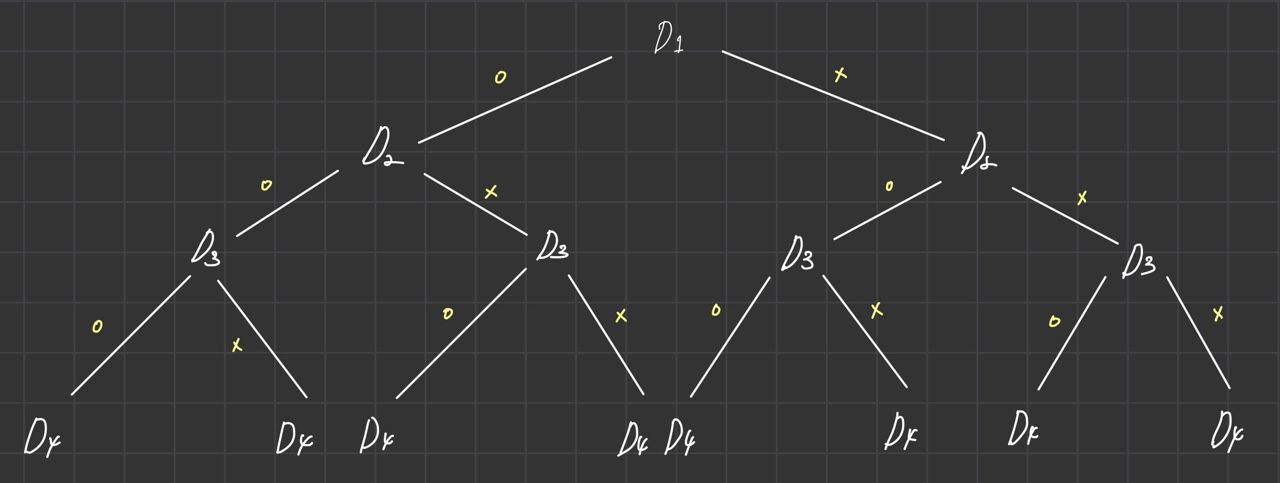문제분석
- arr의 합을 total이라 했을때
total - 부분집합 = 부분집합 이면 원소의 합이 같은 경우이다. - 완전탐색으로 arr의 최대합부터 최소합을 탐색한다.
- 탐색도중에 1의 경우가 나오면 재귀함수를 탈출한다.
코드
function solution(arr){
let total = arr.reduce((a, b) => a+b , 0),
n = arr.length,
answer = "No",
flag = 0;
function DFS(L,sum) {
if(flag === 1) return;
else if(L === n){
if(total-sum === sum){
answer = "Yes";
flag = 1;
}
}
else{
DFS(L+1,sum+arr[L]);
DFS(L+1,sum);
}
}
DFS(0,0);
return answer;
}
let arr=[1, 3, 5, 6, 7, 10];
console.log(solution(arr));완전탐색의 원리

맨위부터 숫자가 유무로 나누어져 결국 모든 경우의 수를 구하게 된다.
햇갈리는점
else if(L === n)로 끝가지 도달하면 그 전단계로 돌아가 DFS(L+1,sum)을 수행한다.
예를들어 D4의 x인 경우까지 작업을 완료 했다면 D2로 돌아가 x인 경우인 DFS(L+1,sum) 작업을 수행한다.
